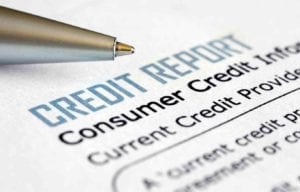It’s happened to countless Americans over the years. You signed up for a credit card, and ran into some trouble. Perhaps you went through a divorce, and you and your spouse were unable to agree on who would pay off a joint credit card account, so you let the account go. Whatever happened, you stopping paying for months on end.
You now owe money, and your credit is now badly damaged. What’s the best way to handle this situation? For those of you who are real estate, mortgage and insurance professionals, this information can be of great value to your clients as well, and using the approaches detailed below, you can help your clients remove negative items from their credit reports.
What Is A Charged-Off Account?
First off, let’s review what exactly a charge off involves. In order for an account to end up being charged off, you must have been unable to make the minimum required payment for at least 180 days,or roughly 6 months in a row. At this point, a bank or credit card issuer is legally allowed to charge off your credit card. “Charge off” is really a fancy accounting term, meaning that the bank or credit card issuer is now allowed to treat the account as aloss, for accounting purposes. An account which is charged off will normally be closed, so that no further spending on the account is possible.
How Charge-offs Are Handled By Creditors
At this point, the credit card issuer might choose to hire a collection agency, to assist the original creditor in obtaining payment on the debt. They might do this by placing an item on your credit report(s), which will damage your credit, and make it more difficult for you to obtain credit, whether that be a mortgage, auto loan, insurance, or an apartment rental. A collector might also send you letters or emails (with certain restrictions on their conduct, as provided for under the Fair Debt Collection Practices Act), seeking payment of the debt. Depending on the amount of the debt, a collector might also decide to file a lawsuit, in state court, seeking payment of the debt. We’ve written in detail about how to handle collections accounts, in the following 4 part series: Part 1, Part 2, Part 3, Part 4.
In other cases, a creditor might choose to collect on the debt in house, rather than through a collection agency. In this situation, you will have to negotiate directly with the creditor. This carries both advantages and disadvantages. The positive in this situation, is that you don’t have to obtain the agreement of both a collector, as well as a creditor, so the settlement process can move somewhat faster. The downside is that because an original creditor is more likely to have the original paperwork for the account, so, attempting to dispute the account, and arrange it’s removal, without a settlement, is somewhat more difficult.
How To Negotiate Charge-offs When Dealing With An Original Creditor
When negotiating with an original creditor to remove a charge off, there are two objectives. First, you’ll want to minimize the amount you must pay, in order to settle the debt.
One way to accomplish this is to offer the pay the entire settlement amount in a single, lump sum payment. This offers a creditor greater certainty, and less risk, since they don’t have to worry about you starting to make payments on a card, and then suddenly defaulting. In exchange for this reduced risk, creditors will often accept a smaller settlement amount.
Also, the more time that has passed since the initial default on an account, the greater the chances that you can settle for a reduced amount. Typically, within the first two years after a default, you should expect to settle for around 50 to 60% of the amount owed, while if more than four years have passed, it is reasonable to settle for 40% or less, of the amount owed. Of course, if you have a major upcoming financial transaction (such as a mortgage application or an auto loan), then it makes more sense to settle the account, even if for a larger amount, given that having a charged off account.
The second objective, is to arrange to have the charged-off account removed from your credit report(s). One method is to simply request that a credit card company, in exchange for accepting payment, agree to stop reporting the account to credit bureaus, and issue a letter of deletion. While this works sometimes, very often, credit card companies have agreements in place with credit bureaus, to not accept “pay for delete”, as this approach is known. If that’s the case, you’ll need to try our second approach, “settle and dispute.”
Under the “settle and dispute” method, you will settle the account with the creditor, paying some portion of the amount owed. In exchange, a creditor will agree not to respond to any dispute you might file with a credit bureau, challenging the account. You’ll want to obtain this agreement in writing, to make sure that the creditor complies with it’s provisions. After you’ve paid/settled the debt, you’ll let a month or two pass, after which you will dispute the account, seeking it’s removal. If the creditor does not respond to the dispute, as agreed to, then the debt will be deleted from your account, within 30 days. If they do respond, then they’ve violated their agreement with you, and are potentially subject to a lawsuit. You can raise that threat, and most times, the item will be deleted from your credit report(s).
If, for some reason, “settle and dispute” isn’t possible, you’ll need to try our final method, which simply involves settling the account, without an agreement not to respond to the dispute, and disputing the account later. This can be a somewhat riskier approach, in that unlike “settle and dispute”, a creditor is under no legal obligation not to respond to your dispute, and some creditors will choose to attempt to validate the debt. However, the reality is that in most cases, creditors are not very motivated to validate a debt which has already been settled. What’s more, even if they wanted to, they are often unable to meet all of their legal obligations, in terms of providing required documentation. For these reasons, chances of removing a charge-off even in this case, is relatively high.
Removing Chargeoffs Without Paying
In some cases, it may be possible to remove a charge off without any kind of settlement. If the charge-off is five years or older, and has not been reported to the credit bureaus recently (look at the date last active) the risk of being sued on the debt has likely passed, since the statute of limitations (the time during which a lawsuit is permitted) in most states, is less than five years. Also, after five years, the chances of the creditor successfully proving that you owe the debt, have decreased considerably, as has their motivation, given that the account is falling off your credit report relatively soon. For these reasons, filing a dispute of the account through the credit bureaus, has a decent chance of working here. Quite often, the item won’t be removed after your first or second letter, so a few rounds of effort will be required.
Final Thoughts
In dealing with a charge-off, there are a few simple rules, which will help you to deal with your situation in a relatively smooth manner. First, remember that resolving these issues takes time. It won’t happen overnight. Negotiating is often a tedious process, with a lot of back and forth. However, credit card issuers ultimately want your money, in a settlement, and so are likely to work with you, to ensure this happens. Second, let’s keep in mind that credit card issuers, like all data furnishers, have significant obligations under the FCRA, in terms of verifying and validating negative information on your credit report. They are often unable to meet these obligations, particularly on older accounts, where paperwork and supporting documentation is often much thinner. Charged-off accounts are one of the killers of credit scores, so removing these items from your credit reports, will allow you to enjoy the best rates and terms, on everything from mortgages to credit cards to much more. If you are a real estate or lending professional, using these strategies will allow you to turn your most credit-challenged leads into closed deals. At Tier One Credit, our attorneys remove charge-offs, and any other type of negative credit item. Please let me know if we can be of help.
Shiva Bhaskar is an experienced consumer credit attorney, and the cofounder of Tier One Credit (www.tieronecredit.com), a credit consulting firm dedicated to helping every American enjoy the best credit score possible. Shiva can be reached by email at [email protected].



